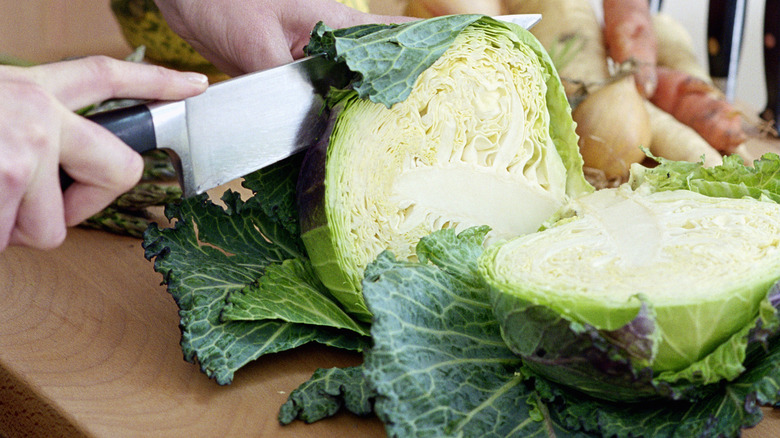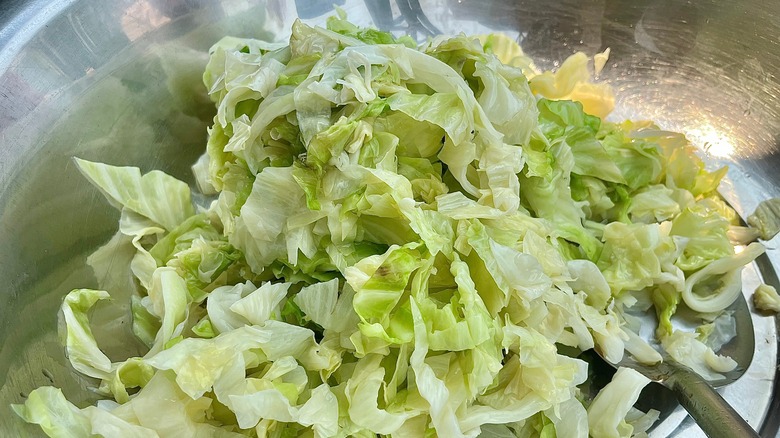How You Freeze Cabbage Depends On When You Want To Use It
If you've ever had more cabbage than you can use — maybe you got a little carried away at the farmer's market, or your garden has been particularly generous — freezing the leafy vegetable is an easy and effective solution for you. The way you freeze it, however, greatly depends on when you plan to use it, whether it's in a few weeks or several months.
First, let's talk about short-term freezing. In this case, you'll be freezing the cabbage raw. Begin by rinsing it thoroughly under cold water, then pat it dry. Next, decide how you want to use your cabbage in the future to determine how you should cut it. You can chop it into shreds for stir-fries or casseroles, cut it into cabbage wedges for roasting, or even leave it in larger chunks for soups or stews.
Once you have your cabbage prepared, spread the pieces out on a baking tray. Pop the tray into the freezer for a couple of hours. This flash freeze helps keep the pieces separate, making it easier for you to grab just the amount you need later on. After the pieces are frozen, transfer them into freezer bags or containers. Squeeze as much air from the bags as possible to avoid freezer burn, then seal. Finally, label your bags with the date, so you know when to use them by. Raw frozen cabbage is best used within two months.
Freezing cabbage for long-term use
When it comes to preserving cabbage for the long haul, a slightly different approach is needed. Blanching, a quick cook in boiling water followed by a plunge into ice-cold water, is the key to maintaining the cabbage's quality over many months. Start by washing the cabbage thoroughly to remove any dirt or bugs, and then cut it into your desired size and shape, according to how you plan to use it in your future culinary endeavors.
Now, for the blanching, fill a large pot with water and bring it to a boil. Add the cabbage and let it boil for about one to two minutes. This brief cooking period deactivates enzymes that can cause the cabbage to lose flavor, color, and texture over time. After the time is up, quickly move the cabbage to a bowl of ice water to stop the cooking process immediately and help the cabbage retain some of its crisp texture.
After cooling, drain the cabbage well and pat dry. Next, you'll want to flash-freeze the cabbage on a baking tray and then pack it into freezer bags or airtight containers. Remove as much air as possible to prevent freezer burn, and seal them tightly. Don't forget to label each bag with the date of freezing. Cabbage prepared this way can last in the freezer for up to nine months. With this method, you can enjoy the taste of fresh cabbage for months, regardless of the season.

